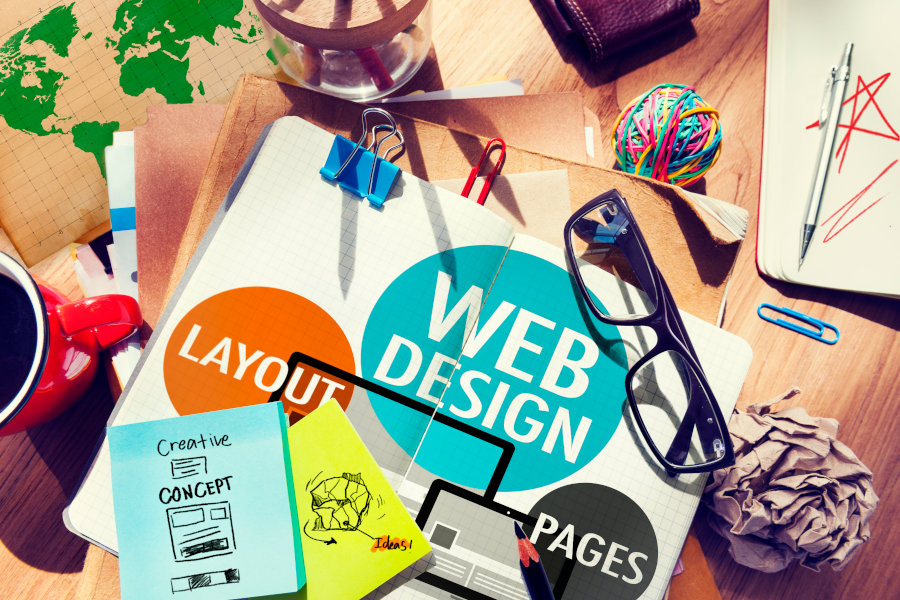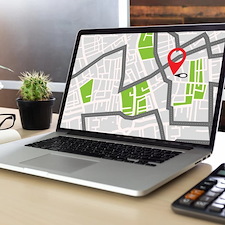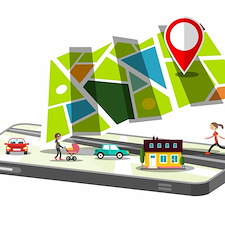Pretty Websites and Why They Don't Really Work


We're not saying that pretty websites are bad. The website for your business should be visually appealing, it needs to provide a quality user experience and a good looking site is a major part of that no matter what industry you're in.
What we're saying is that your website has to have style AND substance.
It can't be all paint job – there has to be a reliable engine under the hood to get you to where you need to go. Just painting flames on the side of the thing isn't going to make to go faster. Let's talk about why website looks aren't everything, and how to combat those common "pretty website" problems so you can have a website that both looks great and performs well.
Pretty Websites and "Builder Programs"
- GoDaddy WebBuilder
- Wix
- SquareSpace
- Weebly
- WordPress themes
There are a ton of DIY website builder options out there. And if you have a good eye for design, you can achieve some pretty good looking sites.
The bigger problem with these types of web builders is not that you cannot achieve aesthetically pleasing designs. It is that, even if you can manage to get something that looks good and have call-to-action in the right places, this style of website will be incredibly heavy from a technical perspective.
The way that these drag-and-drop builders work is by having code that implements code for you. Code on code on code can sometimes be very verbose to achieve a simple design. On the front end, you don't see it – but under the hood there is a lot going on. Usually, that also means the browser, your computer, and the server have to make lots of trips back and forth to a database.
Why Should You Care About All of That Technical Mumbo Jumbo?
There are two good reasons. People like fast websites, and Google does too! People will leave your site before interacting with you at all if it doesn't load fast enough – with 47% of consumers expecting a web page to load in 2 seconds or less.
We've already talked about how since 2010 Google has considered speed as a ranking factor for desktop and that as of July 2018 pagespeed will also be a factor for mobile searches.
The downside with database driven websites without the appropriate technical preparations or with WYSIWYG (what-you-see-is-what-you-get) and drag-and-drop builders is that you have little control over the finished code. Since it is meant for the layperson with little or no technical knowledge, they don't want people too much access to hurt themselves with. This means that your easy to build website loads slowly and cannot be well optimized.
Also – and without trying to sound too harsh – if you have a website built by a professional trademen or technician... then you get a website built by a roofer or HVAC tech or electrician. That person may have a great skill set in their trade, but that trade isn't the web or marketing.
You don't get a website built by a website professional. It's like how, in the same way, I can watch a YouTube video and replace my own ceiling fan. I can technically get the job done, but it clearly would be better done by someone who really knows what they are doing and who has had experience in that field. They wouldn't make the same mistakes that I do. They would be way more efficient than when I would at the same task.
Pretty Websites That Are Image and Video Heavy
Whether you make the website yourself and have a professional marketing company do it, huge images and giant autoplay videos are all the rage. And for good reason – they look great! People would much rather see videos and images of your work than read a book about it.
How the images and videos are deployed can be a problem. Without getting overly technical, images come in a variety of file sizes and pixel densities. To print a picture, you need to have a "high-resolution" image, meaning there is more data within the image file itself. To put the same image on the web, you can get away with a lower resolution images to have the quality image on your website.
You need higher quality images with more information in stuff printed in the real world than you do when looking at a screen. The internet doesn't complete the image resizing for you. If you take a "print ready" image meant for a large sign and throw it up on your website, it will work. But it will be a waste of data and bandwidth.
Again, this sounds like a small thing – but unnecessarily huge images will cause your site to load more slowly, which every human and every search engine hates. Videos have their own issues; they are huge files by necessity and take up a large amount of your website quota and bandwidth with each load and play.
You can fix these issues by making sure you are storing the media correctly. Images should be "optimized for web" which reduces their file size while making sure their quality is still acceptable. Videos can be stored using a separate web service, like a content delivery network or even YouTube.
Making those little tweaks will save you on a ton of resources, meaning you can have your huge images and videos while still loading quickly for your users.
Pretty Websites With No Content
Sometimes the "huge images and videos" look goes even farther. In some designs, your website pages lose all of their text content and only show images and video content. When that happens, it is difficult for search engines to learn about your website. They can't really look at the image or watch the video to understand what your website is trying to communicate. (Not yet at least!)
This looks great for people, but creates a problem when it comes to search engine optimization. Google sends "spiders" to "crawl" your website to determine the intent and quality of your website content. As creepy as internet arachnids sound, it is a necessity for Google and other search engines to figure out where to rank your website amongst your competitors.
You can help by making sure that your file names and "alt tags" accurately describe what is in your image. Having at least a little text, like proper headlines and perhaps some text descriptions on page will also help. You can have a website with mostly no content, but you have to allow for at least some written word if you want to have a beautiful website that also can be found.
Pretty Website With Only One Page
"Infinite scrolling" or traditional one-page websites are difficult to optimize as well. When you only have one page, you only have one shot to tell search engines one message defining what your business is about. If you only provide one service in one area, that might be okay!
If you offer more than one service and you really only want a single page website, then you must choose what one message you want to portray.
Instead, my advice would be to have a very visually attractive home page that can have your "click to scroll" or "tap to scroll" capabilities, but to also have some other pages of content to go along with it. Otherwise – one page designs are purely a stylistic choice. It is not necessarily a good business choice. You can design your website for you if you want, but we recommend that you design your website for everyone else instead.
If you care at all about organic optimization, you have to make sure that your pretty website also works. All looks with no brains and brawn means that your website will only look good for people who already know about you or if you only use paid advertising traffic to get users to your website.

About Chris Lonergan
Chris Lonergan has over 13 years of contractor marketing experience with Footbridge Media. With a background in web design, print design, content creation, and online marketing, Chris is focused on providing quality marketing and business solutions in the construction and service industries - helping small business owners to more efficiently manage their companies and grow their operations.
Chris Lonergan has previously contributed to and/or been featured in PM Magazine (Plumbing & Mechanical | Contractors x Engineers), theNEWS (ACHR - Air Conditioning | Heating | Refrigeration), Turf Magazine (For Landscaping and Green Industry Professionals) Service Roundtable's blog, inPAINT Magazine, the SMB Marketing Agency Show, and the Green Industry Podcast. Chris is also a past SGI/CertainPath breakout session presenter.





